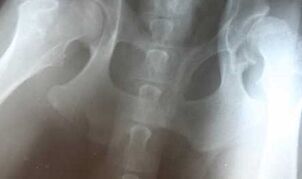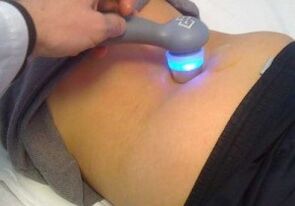
Hip arthrosis is a pathology that occupies a leading position among various degenerative-dystrophic problems of the musculoskeletal system. There are many causes for this disease, so people of different ages are at risk. However, it should be noted that defeat of the hip joint is most common in middle-aged and elderly people.
Grade 1 arthrosis of the hip joint has been successfully treated with non-surgical medication. Unfortunately, however, patients are in no hurry to see a doctor immediately, mistakenly thinking that the painful feelings will go away on their own. Meanwhile, the pathological process has already begun and is progressing more and more every day. A distinction must be made between primary arthrosis of the hip joints, the etiology of which is unclear, and secondary arthritis resulting from such diseases:
- Perthes disease;
- congenital dislocation;
- abnormal tissue development in the hip joint;
- aseptic necrosis of femur;
- inflammatory processes;
- hip fractures.
One or two hip joints may be affected. Bilateral arthrosis is not uncommon and can cover the spine and knee joint with a unilateral pathological process.
Causes of hip arthrosis
- deterioration of arterial blood flow and its venous outflow, resulting in insufficient nutrition of the tissues, accumulation of under-oxidized metabolic products, which are responsible for the activation of enzymes;
- mechanical factors that cause joint overload, such as overweight or professional sports;
- biochemical changes in cartilage, hormonal disorders, metabolic disorders;
- traumatic displacements, cervical and pelvic fractures;
- necrosis of the tissues of the head of the hip bones;
- arthritis, infectious processes;
- pathological changes of the spine (kyphosis, scoliosis) and flat legs;
- congenital displacement of the femur;
- congenital diseases of joint development;
- sedentary lifestyle;
- the body has an inherited predisposition (skeletal weakness, metabolic disorders, structural features of cartilage tissue).
Symptoms of hip arthrosis
We distinguish the general symptoms of this pathological process, but it should be understood that they may differ at different stages of the development of arthrosis. The main signs of damage to the hip joint are:
- pain in the groin, hips, joints, and knees that does not subside even at rest;
- stiffness and stiffness;
- limping;
- thigh muscle atrophy;
- the affected limb will be noticeably shorter.
The main symptom of hip arthrosis is pain, intensity and duration, and its nature and localization depend entirely on the characteristics of the pathological process. It is best to start treatment at the beginning of the disease, when the discomfort is not yet pronounced. If appropriate action is not taken in time, the pain will intensify, resulting in significantly limited mobility of the affected limb.
Grade 2 hip arthrosis is characterized by intense pain radiating to the groin and thigh. In this case, the joint is disrupted, lameness appears, internal movement is restricted and the hip is torn to the side. The abductor and extensor muscles lose their strength, and bone growths can be seen on the x-ray, which can stretch strongly. The femoral head is deformed, its contour is distorted, and the volume increases. In addition, cysts can form in the most stressed areas of the joint.
In stage 3 of the development of arthrosis, the pain becomes permanent and can interfere even at night. It’s so hard to walk that you have to use a special comma. Movements in the hip joint are restricted, the muscles of the buttocks, the affected thighs and lower legs wither and the legs shorten. All this leads to a change in gait and an increase in the load on the affected joint. As bone growth increases, the joint space disappears and the joint grows together, eventually losing its mobility.
Treating hip arthrosis

If the disease is detected at an early stage, conservative treatments using a variety of medications are preferred. The patient is primarily prescribed non-steroidal anti-inflammatory drugs that perfectly relieve swelling and inflammation, resulting in a reduction in pain syndrome. In the case of muscle cramps, muscle relaxants are prescribed, the effect of which is to stimulate blood circulation and relieve cramps. In addition, chondroprotectors are often used in arthrosis - drugs that allow thinned cartilage to be restored.
Do not forget about therapeutic massage and physiotherapy methods, as the effectiveness of such procedures is very high. Attempts are often made to treat the affected joints with various compresses, body lotions and ointments made according to folk recipes, but these therapies are not able to achieve an adequate therapeutic effect. With their help, you can only temporarily relieve pain and muscle cramps. Be sure to consult a doctor before treating hip arthrosis, as the independent use of one or the other drug can only aggravate an already complex condition.
Gymnastics for hip arthrosis
Gymnastics plays an important role in treating the disease. Specially selected practices for hip arthrosis prevent its fusion and maintain mobility. If a sore joint develops in this way, you need to be very careful not to cause further injury to yourself. Before and immediately after performing movement therapy exercises, it is recommended to perform a muscle massage in the thigh and the affected joint to prevent the appearance of discomfort.
Water is an excellent aid in the treatment of arthrosis, so it is useful for the patient to swim in a pool, river or sea. In addition, a warm bath can help relieve pain and relieve muscle tension in which your legs can move smoothly and slowly. It is important not to overload the sore joint and to be at rest as much as possible.


















































